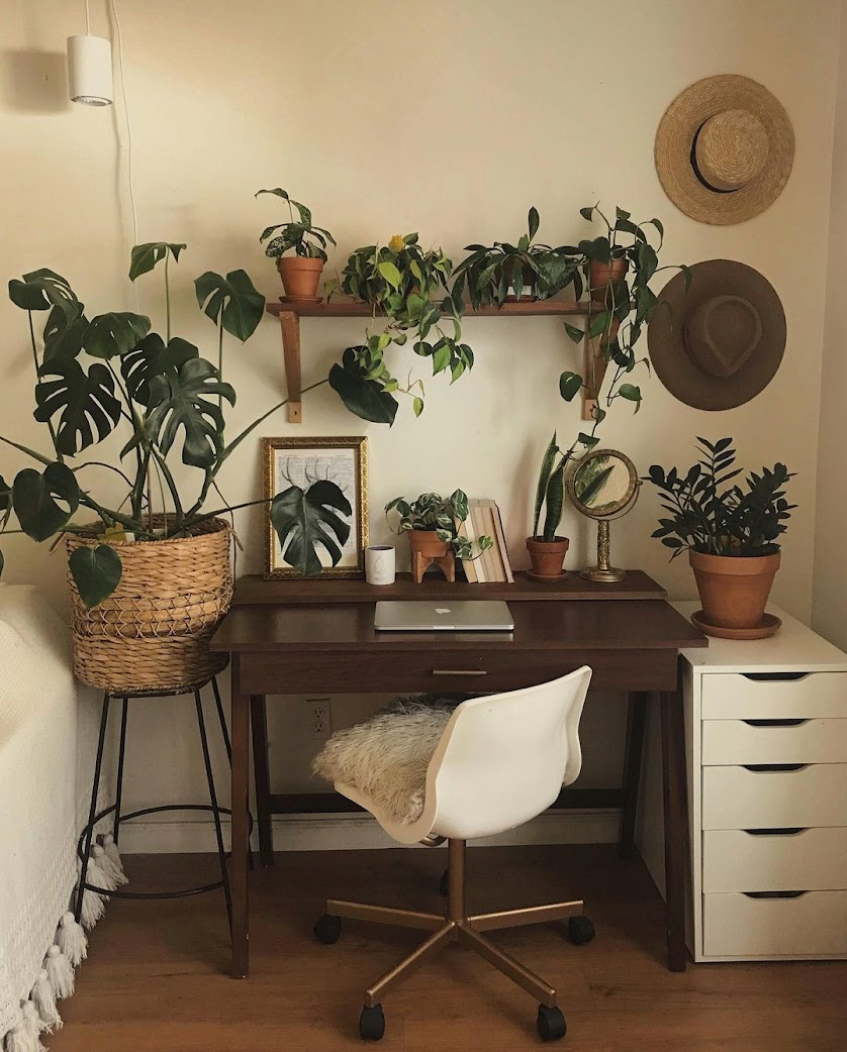
When it comes to taking care of houseplants, choosing the right pot and soil is just as crucial as ensuring they receive the proper amount of water and light. The health and vitality of your plants greatly depend on these factors, which can influence their growth, appearance, and overall well-being. As you embark on this journey of nurturing your green companions, we encourage you to delve deeper into the world of houseplant care. Our blog post on "The Top 10 Easy-to-Care-for Houseplants for Busy People" is an excellent resource to start with. You can explore it here: The Top 10 Easy-to-Care-for Houseplants for Busy People to gain more insights into selecting low-maintenance plants that fit seamlessly into your hectic lifestyle.
Now, let's guide you through the process of picking the perfect pot and soil for your leafy friends, ensuring they not only survive but thrive in your home.

Picking the Perfect Pot
The journey to cultivating healthy, vibrant houseplants begins with selecting the right pot. The size of the pot is particularly important; it should be large enough to allow your plant's roots to expand comfortably, yet not so large that it becomes cumbersome to move or care for. An oversized pot can lead to overwatering issues, as excess soil retains more moisture than necessary, potentially causing root rot.
If aesthetics are a priority, terracotta pots are a timeless choice, offering a natural, earthy appearance that complements a wide variety of plant types. However, keep in mind that terracotta is porous, which means it can dry out the soil more quickly than other materials. This might require more frequent watering, especially in warmer climates or indoor environments with low humidity.
On the other hand, plastic pots offer a diverse range of colors, designs, and sizes, making them a versatile option for any interior design style. They are also lightweight and easier to handle. However, because plastic is non-porous, these pots tend to retain more moisture, which could lead to issues like root rot if watering is not carefully managed.
For those needing more detailed guidance on selecting the perfect pot, Good Housekeeping has curated a list of the best indoor pots and planters that balance aesthetics and functionality. You can check it out here: Best Indoor Pots and Planters.
It's also essential to consider the specific needs of the plant species you're potting. Certain plants, like orchids, prefer pots that offer excellent drainage and air circulation around the roots. Orchids typically thrive in pots with additional drainage holes or slits that allow excess water to escape and the roots to breathe. If you're interested in learning more about orchids and how to care for them, our blog post on "7 Unique Types of Orchids to Grow Indoors" offers valuable insights and tips. You can explore it here: 7 Unique Types of Orchids to Grow Indoors.
Similarly, peace lilies are another example of a plant with specific potting needs. They thrive in pots that help maintain a consistently moist environment, but not overly wet. Doing thorough research on your specific plant's needs and selecting a pot that aligns with those requirements is key to successful plant care.
Regardless of the pot material or style you choose, ensuring good drainage is non-negotiable. Proper drainage prevents water from accumulating at the bottom of the pot, which significantly reduces the risk of root rot and other water-related diseases. If you find that some of your pots lack adequate drainage or if you've noticed signs of root rot in your plants, don’t worry—there are solutions. This helpful article on treating root rot provides practical advice to nurse your plants back to health: Treating Root Rot and Soft Rot in Houseplants.

Soil Selection: The Foundation of Healthy Plants
The soil you choose plays an equally important role in your houseplants' health as the pot. A well-draining soil is essential to prevent water from lingering around the roots, which can lead to rot and other complications. Different types of plants require different soil mixes, each formulated to meet their unique needs. For instance, cacti and succulents thrive in a sandy, well-draining soil mix, while African violets prefer a soil that retains moisture without becoming waterlogged.
When filling your pot with soil, it's crucial not to overfill it. Packing too much soil can suffocate the roots and prevent air from reaching them, while too little soil can cause the top layer to dry out too quickly. Striking the right balance ensures your plant receives adequate moisture and nutrients.
For those looking to give their plants an extra boost, consider incorporating organic matter, such as compost or peat moss, into the soil mix. These organic materials enrich the soil with nutrients, improve its structure, and enhance its ability to retain moisture without becoming compacted.

The combination of the right pot and soil can have a profound impact on the health, growth, and beauty of your houseplants. When choosing a pot, consider not only the size and material but also how it complements your home decor and meets your plant's specific needs. The soil should provide the essential nutrients and proper drainage to support your plant's growth. By carefully considering these factors, you can create the optimal environment for your houseplants to flourish, turning them into stunning, thriving additions to your home.
With these tips in mind, you're well on your way to becoming a more confident and successful plant parent. Happy planting!






